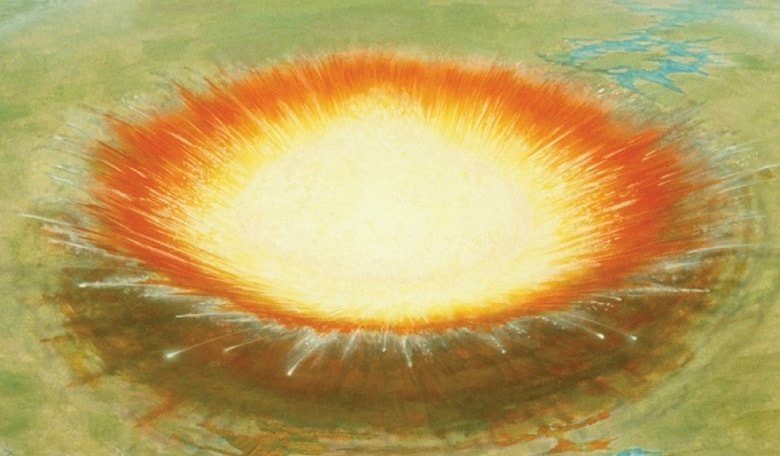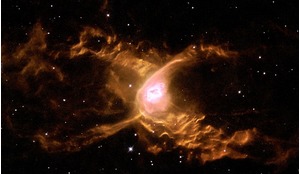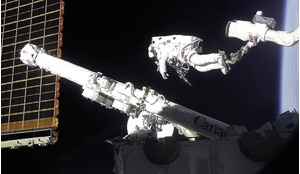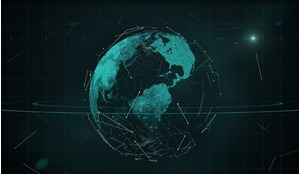Since such events may happen at any point in time it would be unforgivably careless not to take measures to protect ourselves from these potential threats. The most effective measure of protection would be the creation of an international Planetary Safeguard System (PSS). [1] [2]
However, since such a system is yet to be created, some measures have to be taken in the meantime to minimise the potential damage resulting from space catastrophes. With this goal in mind, the most important tasks become scientific probability and risk analysis, and the minimisation of damage caused by the potential atmospheric entry of dangerous celestial bodies (DCB). In order to abate the consequences of such entries, the location, time, and blast energy, as well as the damage effects and aftermath for the populace and the environment must all be determined well in advance. In order to accomplish this, the Service for the Strategic Location and Aftermath Forecasting for DCB entry cases must be created. [3]
In the future, such a service will be a secondary (reserve) PSS component, for extra security in cases of:
- entry of a large object fragment (decametre in size) destroyed near Earth
- small time window prior to the object’s collision with Earth, that doesn’t allow one to use main PSS interception methods.
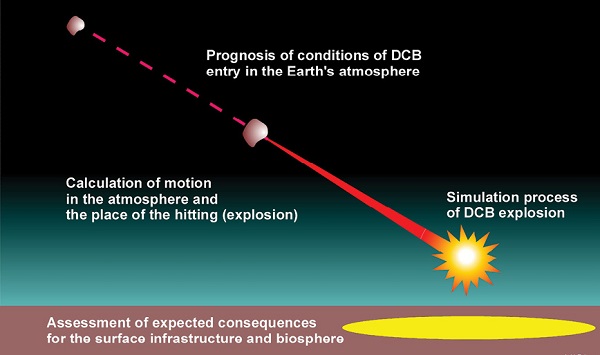 Forecast stages of the atmospheric entry of ‘dangerous celestial bodies’
Forecast stages of the atmospheric entry of ‘dangerous celestial bodies’
Forecasting system structure
We were tasked by the Emergency Services Ministry of Russia to develop key principles for building such a service. The most important element of the service is the hardware and software suite (HSS) that combines a number of catastrophe scenario simulation programs for cases of asteroid or comet danger. A demo version of this HSS provides the following:
- forecasting the movement of potentially dangerous bodies
- determining the bodies’ conditions of entry into Earth’s atmosphere and their characteristics
- calculating movement in the atmosphere and location of fall (blast)
- assessing the explosion yield in the atmosphere, on the surface and in water
- assessing expected aftermath of the explosions for surface infrastructure and the biosphere.
The HSS forecasts the movements of potentially dangerous bodies during only a few solar revolutions because the data is mainly intended for immediate use. The body’s orbit is determined based on already existing observations with an assessment of the exact calculations of the orbit’s elements, while the body’s size is defined using photometric data. A forecast of the potentially dangerous body is then made using numerical integration of motion equations with consideration for significant excitations.
Each time a body approaches the Earth, the probability of collision is calculated, taking into account the indeterminate body orbit calculated at observation. In case an object appears to be on a collision course with Earth, the initial conditions of its entry into the atmosphere are calculated - its physical characteristics, coordinates, speed, angles of entry and their error margins.
After that, a simulation of the DCB movements through the atmosphere is created in order to determine the coordinates and characteristics of the blast dispersion. The Monte Carlo method is used to evaluate the DCB movement parameters and determine the DCB trajectory. Each scenario uses pseudo random variables within the specified limits as the initial data. Based on these calculations, the mathematical expectation and the mean-square deviation are determined for each of the studied parameters (coordinates, height, speed, time, etc), which makes it possible to determine the most likely location, time and height of the explosion and the possible deviation limits.
It should be noted that, based on the DCB physical and trajectory parameters, it can either reach Earth’s surface or explode in the atmosphere. In the latter cases, the energy release is not immediate, but rather drawn out in time (prolonged blast). Therefore, in such cases, the height of the blast is determined for a hypothetical equivalent point explosion, the shock waves from which correspond to a prolonged blast. The method used in this case is detailed in the paper. [4]
Based on the results obtained, an assessment of the blast aftermath for the population and the environment are performed, using geo-information technology and mathematical models. This helps to implement a systemic approach to assessing the consequences of celestial body falls based on their parameters, geographical conditions of the location, its urbanisation and man-made infrastructure levels.
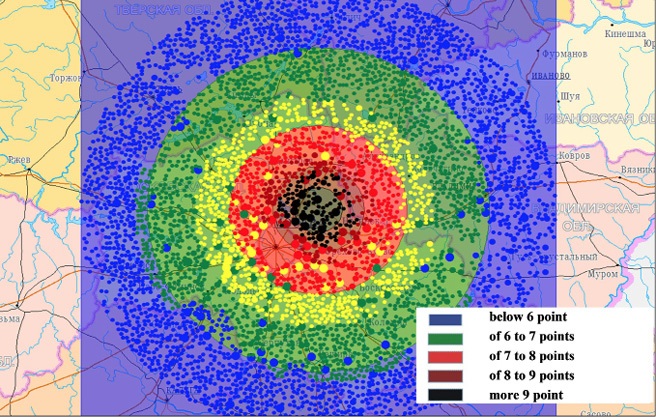 Seismic field after the asteroid fall in Moscow region.
Seismic field after the asteroid fall in Moscow region.
A conjunction of control models and destruction probability curve (destruction/damage) are used. The use of this method allows for the assessment of DCB explosion consequences for the population and the environment. Actions to minimise the risks to the population can then be performed well in advance, based on the forecast information about the aftermath of such falls. This also allows for the simulation of possible space catastrophe scenarios.
Since asteroid and comet danger falls into the category of the few natural disasters that can be predicted, using the HSS enables agencies to undertake a series of measures to minimise damage. These include evacuating the population, material and cultural valuables, dangerous materials and objects from the expected location of the DCB fall - on condition, of course, that the DCB is discovered in advance and the precise location of the fall is predicted correctly.
Humanity has neither effective methods for detecting dangerous celestial bodies nor the capacity to protect itself from them
These actions can only be possible with international cooperation. It would make sense to create two regional segments of an international Forecasting Service - a Eurasian and an American one – each with their own respective Forecasting Centre. The Services should include a space observation segment, surface optical and radio-locating means, regional Forecasting Centres and communication channels between all of the service’s components. After the suggested service is created, it will become an important component of a future Planetary Safeguard System.
Simulation results
The final part of the DCB’s journey in the atmosphere, as was noted above, may end in an explosion above Earth’s surface (like the Tunguska meteorite), on the surface or in water. It will be accompanied by a wide spectrum of damage effects - blast wave, thermal radiation, seismic effects, terrain changes, tsunami formation, etc. The HSS demo version uses simulations for two main damage factors - blast wave and seismic effect.
Below are the results of qualitative assessments of the vulnerability and possible damage to surface infrastructure and the Earth’s biosphere from the damage factors resulting from a hypothetical asteroid fall. The results were obtained after a test simulation done by the HSS demo version.
This example is an assessment of the aftermath of a fall of a hypothetical asteroid that could have fallen in the Moscow region. The hypothetical asteroid’s parameters are: diameter - 250 m; density - 3000kg/m3 speed - 14,861 km/s; and angle of impact - 45 degrees.
The calculations showed that the radius of a seismic field with an intensity of 10 to six points will be approximately 200 km. Loss of human life from the blast wave will be about three to four times less than that caused by the impact’s seismic effect.
Possible consequences of the event were assessed, based on the simulation results of the most important damage factors of the explosion: affected area, scale of destruction and loss of life. The results of the assessment in this case can be seen in the illustration on p19. It shows the level of residential area destruction depending on the distance from the asteroid’s impact site.
Table 1 shows calculation results of the consequences of an asteroid collision in relation to major points of damage to people and property: the type of damage to the population, including permanent, medical and general damage. Medical damage to the population is also categorised by severity - light, serious and extreme.
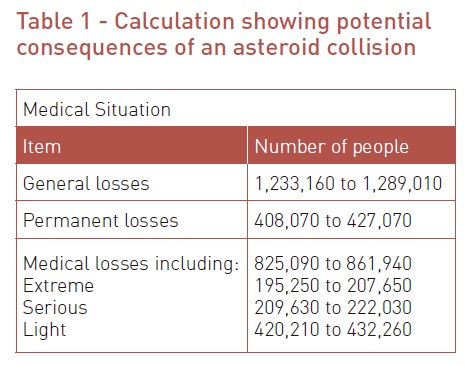
Obtained data can be used as a basis for managerial solutions in preparation and implementation of evacuations, as well as conducting rescue and recovery operations in emergency situations caused by the entry of a DCB. Specifically, the required number of rescue workers, medical personnel, emergency and technical crew, mechanical equipment and life-support systems can be determined. Thus, for the reviewed example, over 500,000 people would be needed for rescue and recovery operations.
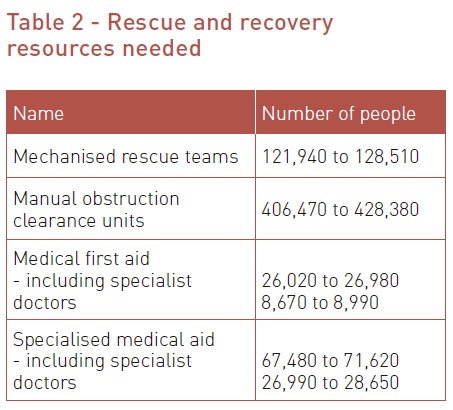
Post-catastrophe damage control and recovery will require about 16,000 units of heavy machinery, 14,000 fire vehicles, 11,000 automobiles, and a lot of other machinery.
Since over three million people may lose their homes, about 400,000 tents would be needed during the summer and about 800,000 during the winter, as well as about 800,000 heaters and 25,000 field kitchens. The necessary food and water supplies would constitute a few thousand tonnes daily.
The aforementioned qualitative assessment of the event’s catastrophic scale and the resources needed for rescue and recovery are, of course, impressive. It is obvious that one country cannot provide a rescue operation on such a massive scale - and this is considering the fact that we didn’t look at the largest possible hypothetical asteroid. But even the fall of smaller objects may still lead to very serious consequences.
The results of the simulation of possible consequences of DCB fall and the assessment of necessary manpower and resources for rescue and recovery operations caused by the fall demonstrate the seriousness of asteroid and comet danger, and underline the necessity of developing measures for its prevention.
Planetary Safeguard System
The unexpected fall of the Chelyabinsk meteorite showed that humanity has neither effective methods for detecting dangerous celestial bodies nor the capacity to protect itself from them. And this is despite the fact that modern technology allows us to create the means of discovery and protection from such objects.
Measures have to be taken in the meantime to minimise potential damage resulting from space catastrophes
The results of simulations of possible consequences of celestial body falls showed that the fall of even a relatively small object in a densely populated area can lead to consequences so serious that rescue and recovery would be an undertaking impossible for just one country to handle. Smaller countries could be wiped off the face of the planet entirely.
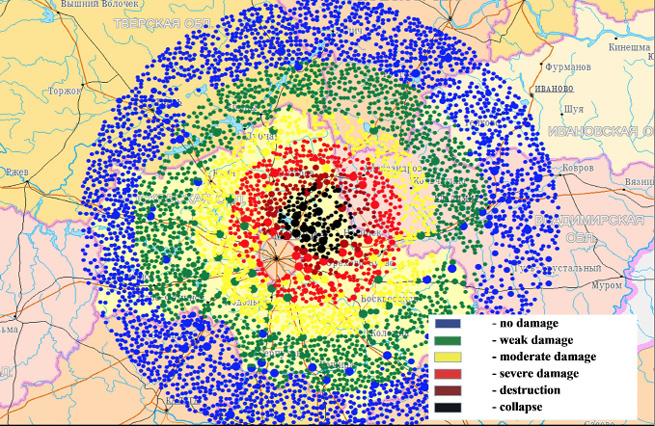 Consequences of the asteroid fall in Moscow region.
Consequences of the asteroid fall in Moscow region.
Only unforgivable carelessness can explain the fact that, considering the availability of all the necessary technology, no specific steps have yet been taken to create a Planetary Safeguard System for the protection from dangers that threaten the very existence of humanity.
Since it is evident that the Planetary Safeguard System must be created with the help of all humanity, practical steps for its creation require a joint decision from world leaders, at least those from the leading countries.
References
1 Medvedev Yu. D., Sveshnikov M. L., Sokolsky A. G., Timoshkova E. I., Chernetenko Yu. A., Chernykh N. S., Shor V. A. (1996) Asteroid-Comet Hazard. (Ed. A. G. Sokolsky), St. Petersburg, ITA RAS. 1996. 244 pp.
2 Bashilov A. S., Volk I. P., Gofin M. Ja., Zaitsev A. V., Konyukhov S. N., Pobedonostsev, Slyunyaev N. N. (2010). Possible Approaches to Implementation of ‘Citadel-1’ International Planetary Defense System Project. In ‘Space for Security and Prosperity on the Peoples’. Editors: J.-M. Contant and V. A. Menshikov. M.: A.A. Maksimov Space Systems Research Institute. 2010. pp. 154-163.
3 N. A. Makhutov, V. A. Puchkov, D. Reznikov, A. A, Taranov, A. V. Zaitsev. About Measures on Minimization of Damage from Collisions with Asteroids and Nuclei of Comets. “Protecting the Earth against collisions with asteroids and comet nuclei”. Proceeding of the International Conference “Asteroid-Comet Hazard-2009”. A. Finkelstein, W. Huebner, V. Shor (Eds). St.-Petersburg, Nauka, Russia. 2010. pp.376-380.
4 V. V. Shuvalov - Multi-dimensional hydrodynamic code SOVA for interfacial flows: Application.





